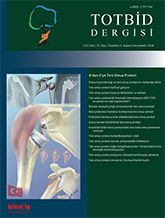
The shoulder joint is among the most mobile and complex joints in the body, crucial for daily activities. Its functionality relies on the integrity of the rotator cuff, glenoid, and humeral structures. Disorders such as osteoarthritis, rheumatoid arthritis, and rotator cuff tears can lead to pain and restricted movement. Anatomical total shoulder prosthesis serves as a surgical intervention for these pathologies, typically used in severe shoulder injuries, with the goal of restoring patients to their daily routines. Anatomical total shoulder prosthesis generally exhibits low complication rates and high patient satisfaction. Conversely, reverse total shoulder prosthesis has emerged as a promising alternative for patients with rotator cuff insufficiency. This technique enhances the deltoid muscle's effectiveness by altering the positions of the humeral and glenoid components. Clinical outcomes for reverse total shoulder prosthesis are often more favorable, with significant improvements in patients' range of motion. The hemispherical design of reverse total shoulder prosthesis facilitates a more vertical alignment of deltoid muscle fibers; however, medialization of the center of rotation can lead to potential complications. In both mediumand long-term assessments, reverse total shoulder prosthesis demonstrates greater patient satisfaction and lower complication and revision rates compared to anatomical total shoulder prosthesis, highlighting its appeal as a treatment option.